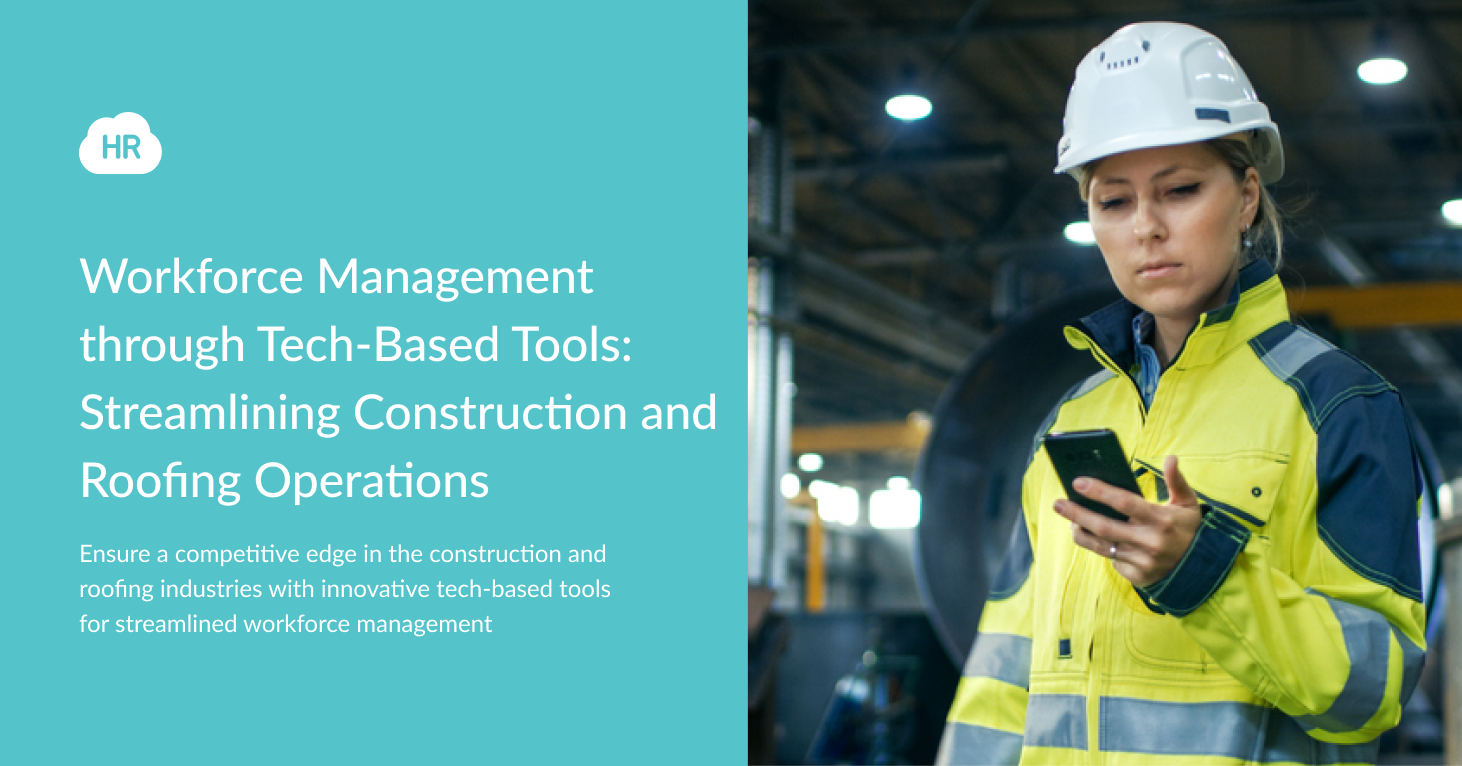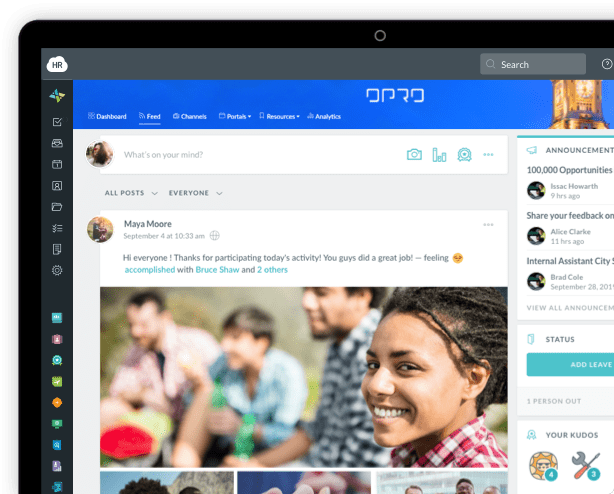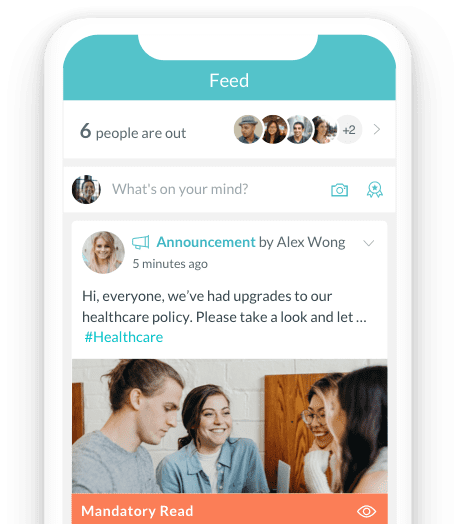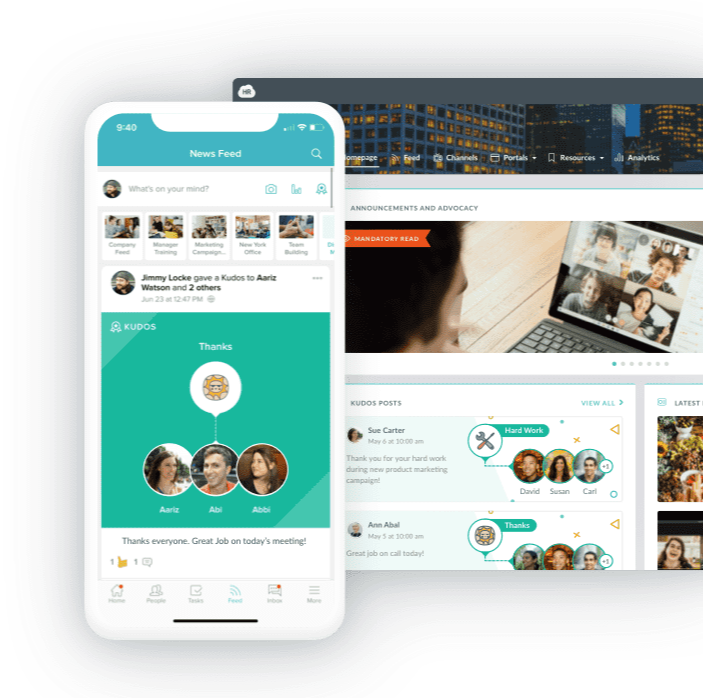Workforce Management through Tech-Based Tools: Streamlining Construction and Roofing Operations

As industries evolve, adopting innovative approaches to workforce management is essential to keep pace and stay competitive, particularly in the construction and roofing sectors where non-traditional work arrangements are becoming more common.
You are faced with unique challenges, such as coordinating project-based teams, managing off-site workers, and ensuring compliance with industry standards, all while striving to maintain productivity and safety.
You can enhance operational efficiency and adapt to the shifting trends in labor management by integrating smart systems. This approach empowers you to stay ahead of the curve by embracing non-traditional workers, which can help attract top talent and maintain a competitive edge.
Utilizing technological advancements facilitates remote work policies, supports the gig economy, and breeds a culture of agility within your organizations. Through the strategic implementation of tech-based tools, you can achieve better oversight of projects and ensure that your teams are aligned with the business goals and project timelines, regardless of the employment type or location.
AR and VR in Construction
The integration of Augmented Reality (AR) and Virtual Reality (VR) into construction has transformed how workforce management and task execution are approached, creating a more efficient and educated environment.
Enhancing Training Through Virtual Reality
Virtual Reality (VR) has revolutionized education within construction, providing immersive training experiences. By donning a VR headset, you can simulate real-world scenarios without the physical risks associated with on-site training. This technology is instrumental for complex equipment operation training, where the cost of error is high.
For example, operating a crane in VR allows for repetition and mastery without fuel costs or the potential for accidents. The immersive aspect of VR not only aids in knowledge retention but also increases engagement, which can lead to a more proficient workforce ready to tackle the complexities of construction.
Augmented Reality for On-Site Efficiency
For AR, its role in boosting on-site efficiency is undeniable. Augmented Reality layers digital information onto the physical world, allowing you to interact with both simultaneously.
This means you could have access to real-time data or 3D models overlaid onto the construction site. AR facilitates more informed decisions and collaboration, from spotting discrepancies between planned and actual construction to visualizing finished structures within the current environment.
The technology can streamline processes such as installation and quality assurance, as vital information and digital guides can be rendered directly within your field of view, allowing for adjustments to be made on the fly and reducing the risk of costly errors.

Leveraging AI for Project Management
In the construction and roofing industries, artificial intelligence (AI) is revolutionizing how projects are managed. Your ability to keep up with these changes can significantly increase your efficiency and productivity.
AI in Design and Planning
When you implement AI in design and planning, you're equipping your team with tools that can generate and evaluate countless design scenarios in a fraction of the time it takes human beings.
Generative design software utilizes AI to optimize layouts, materials, and construction methods, ensuring you're not only meeting but exceeding client expectations. A clear advantage is seen in the application of AI to project timeline optimization, where algorithms process vast arrays of data to forecast bottlenecks and propose the most efficient schedules.
Predictive Analysis and Risk Assessment
AI's predictive analysis capabilities can forecast project risks with a high degree of accuracy. By analyzing historical data, weather patterns, and current project metrics, AI identifies potential issues before they become problematic.
This proactive stance on risk assessment is pivotal in industries like construction and roofing where variables are plenty and the impact of risks is significant. The integration of AI in this process leads to smarter decision-making and enhances your ability to mitigate risks ahead of time.
Incorporating AI into your project management processes isn't just about keeping up with technology; it's about leveraging that technology to create a competitive edge through enhanced productivity and prophetic insight into the project lifecycle.
Tools for Workforce Coordination
In the construction and roofing industries, digital tools have revolutionized how you manage and coordinate your workforce. Seamless communication and real-time progress monitoring are essential for maintaining project timelines and ensuring team alignment. Utilizing HVAC CRM platform or project management software can improve project tracking.

Mobile Applications for Communication
Mobile applications provide you with the flexibility to communicate and coordinate with your on-site teams instantly. All-in-one roofing software optimized for mobile devices enables you to stay in touch with your workforce, organize tasks, share updates, and track job status on the go, ensuring that human interaction remains at the core of project execution.
Utilizing Workmates as a communication and engagement tool can also help you ignite productivity to foster a collaborative work environment, enhance team cohesion, and ultimately contribute to higher productivity levels within the organization. The specialized solutions that Workmates offers will improve engagement not only within your organization but with associates as well.
With the help of these comprehensive solutions, businesses can streamline their operations, optimize efficiency, and gain valuable insights into their processes, ultimately paving the way for sustained growth and success in a competitive market.
Drones for Monitoring Work Progress
Drones have emerged as a vital technology for real-time monitoring of ongoing work at construction and roofing sites.
By incorporating drones, you gain an aerial view to oversee large-scale projects, track work completion, and ensure quality standards are met without the need for constant physical supervision.
Social Media Integration in the Roofing Industry
In the roofing sector, social media has emerged as a pivotal tool for enhancing company visibility and facilitating real-time interaction with customer bases. Your organization needs to recognize the power of these platforms to stay competitive in the industry.
Marketing and Brand Visibility
Your digital footprint on social media is essential for expanding your roofing business's reach. Through platforms like Facebook and Instagram, you can showcase your workmanship, share customer testimonials, and post-before-and-after project photos.
These platforms are powerful channels for promoting your business and affirming your brand's position in the marketplace.
-
Develop an Effective Strategy: Creating a content plan tailored to your audience will steer your marketing efforts in the right direction.
-
Leverage Visuals and Multimedia: Including compelling imagery of completed roofing projects can significantly augment your posts' engagement rates.
Social Intranet Software that Encourages Employee Communication

Customer Engagement and Feedback
Engaging with your audience on social media isn't a passive activity. It demands active communication and the cultivation of a community that trusts your roofing expertise. Promptly responding to comments and inquiries on your posts can build community trust and lead to improved customer relationships.
-
Listen and Respond: Monitoring customer feedback and addressing concerns swiftly can demonstrate your commitment to customer service.
-
Encourage Interaction: Ask questions and encourage responses to stimulate dialogue and gain valuable insights from your followers.
By fostering two-way communication, you make your customers feel heard and valued, which can have a positive impact on your organization's reputation.
Educational Technologies for Skilled Trades
With the increased integration of technology in non-traditional industries like construction and roofing, tech-based tools are essential for advancing education and workforce management. Technology in education allows you to create training documents, share crucial information seamlessly, and invest more efficiently in employee training.
E-Learning Platforms for Continuous Education
E-learning platforms are at the forefront of providing continuous education in the skilled trades sector. These platforms allow you to digitize documents and store files on the cloud, ensuring easy access to educational content anytime, anywhere.
Innovative tools can help you edit PDF documents, providing a simple way to update training materials and ensure that the information remains current.
The use of interactive modules and videos can greatly enhance the learning experience for workers. Moreover, these platforms often offer a variety of courses tailored to specific skills in the construction and roofing industries.
Certification and Training via Tech Innovations
To further your employees’ education in the trades, technology also offers avenues for certification and training.
Tech companies are continuously developing new products that streamline these processes, making it easier for your employees to complete necessary certifications efficiently.
Through such advancements, you can share documents with employees instantly and monitor their progress, highlighting a commitment to invest in employee training. These tech innovations not only promote a culture of continuous learning but also help in maintaining high standards of safety and excellence in your industry.
Conclusion
The right tech-based tools are crucial for efficient workforce management - in any business. Your ability to harness technology directly impacts your productivity and competitive edge. Utilize platforms that facilitate real-time information sharing among your team and employ scheduling software to optimize worker allocation.
To stay ahead, continually evaluate and update your tech stack. The investment in cutting-edge technology pays dividends through enhanced operational efficiency and workforce satisfaction. Remember, as you implement these tools, training, and support are fundamental for your team to adapt and thrive.
Author Bio:
This article is written by a marketing team member at HR Cloud. HR Cloud is a leading provider of proven HR solutions, including recruiting, onboarding, employee communications & engagement, and rewards & recognition. Our user-friendly software increases employee productivity, delivers time and cost savings, and minimizes compliance risk.
Keep Reading
Balancing Technology and the Human Touch in Employee Engagement
Companies are taking employee engagement very seriously because it is one of the ways of
Building Strong Teams: The Power of Team Bonding Exercises
Never overestimate the power of collaboration as a core element of effective team


